Welcome to On Verticality. This blog explores the innate human need to escape the surface of the earth, and our struggles to do so throughout history. If you’re new here, a good place to start is the Theory of Verticality section or the Introduction to Verticality. If you want to receive updates on what’s new with the blog, you can use the Subscribe page to sign up. Thanks for visiting!
Click to filter posts by the three main subjects for the blog : Architecture, Flight and Mountains.
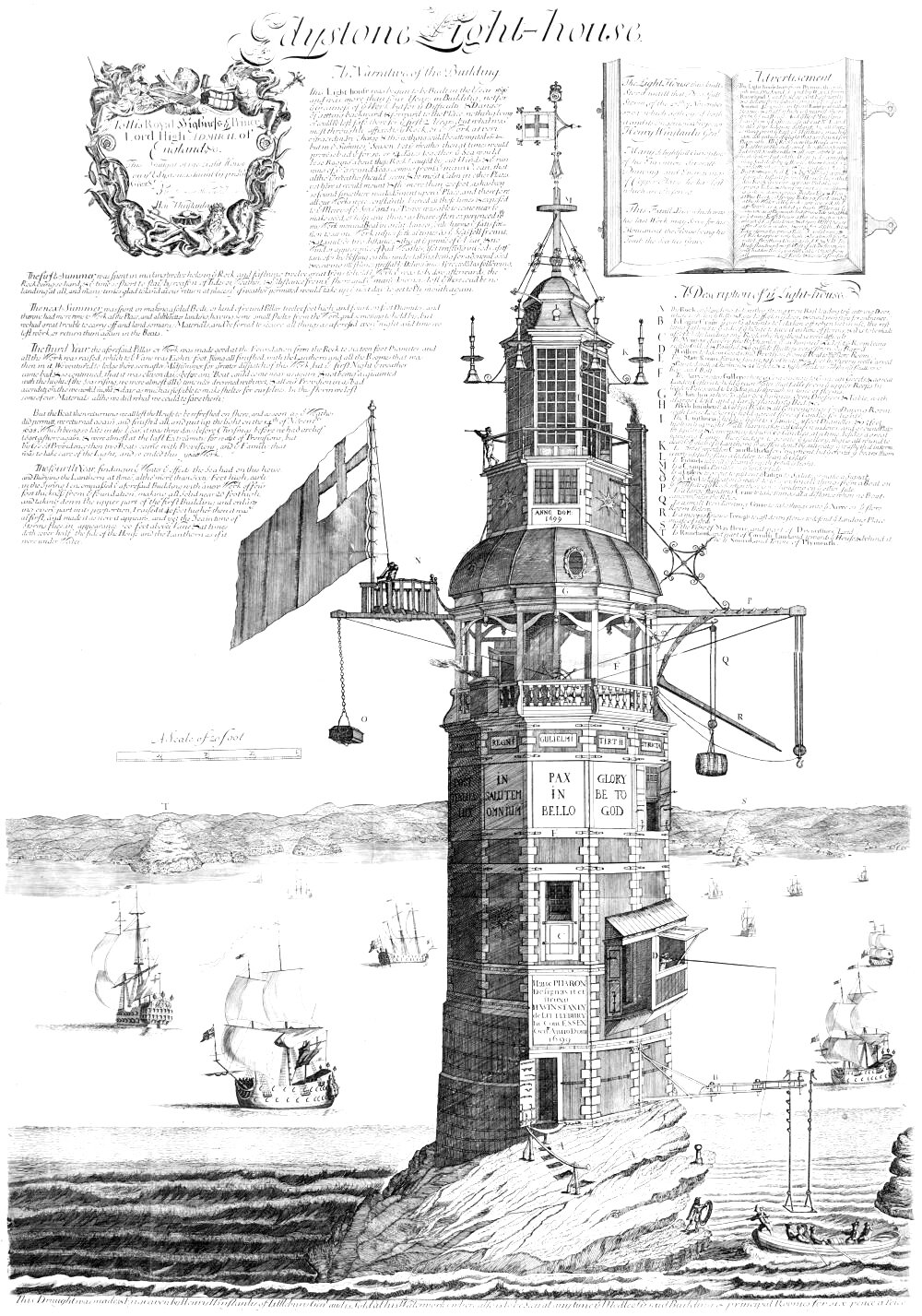
Winstanley's Eddystone Lighthouse
Lighthouse design is all about visibility. These small towers act as beacons for ships at night, alerting captains to various landforms and aiding in navigation. The taller these buildings are, the further away they can be seen. Therefore, the effectiveness of any given lighthouse is based on verticality. Pictured above is the first recorded offshore lighthouse in the world. It was built from 1696 to 1698 off the coast of Southern England, on a shallow reef known as the Eddystone Rocks.
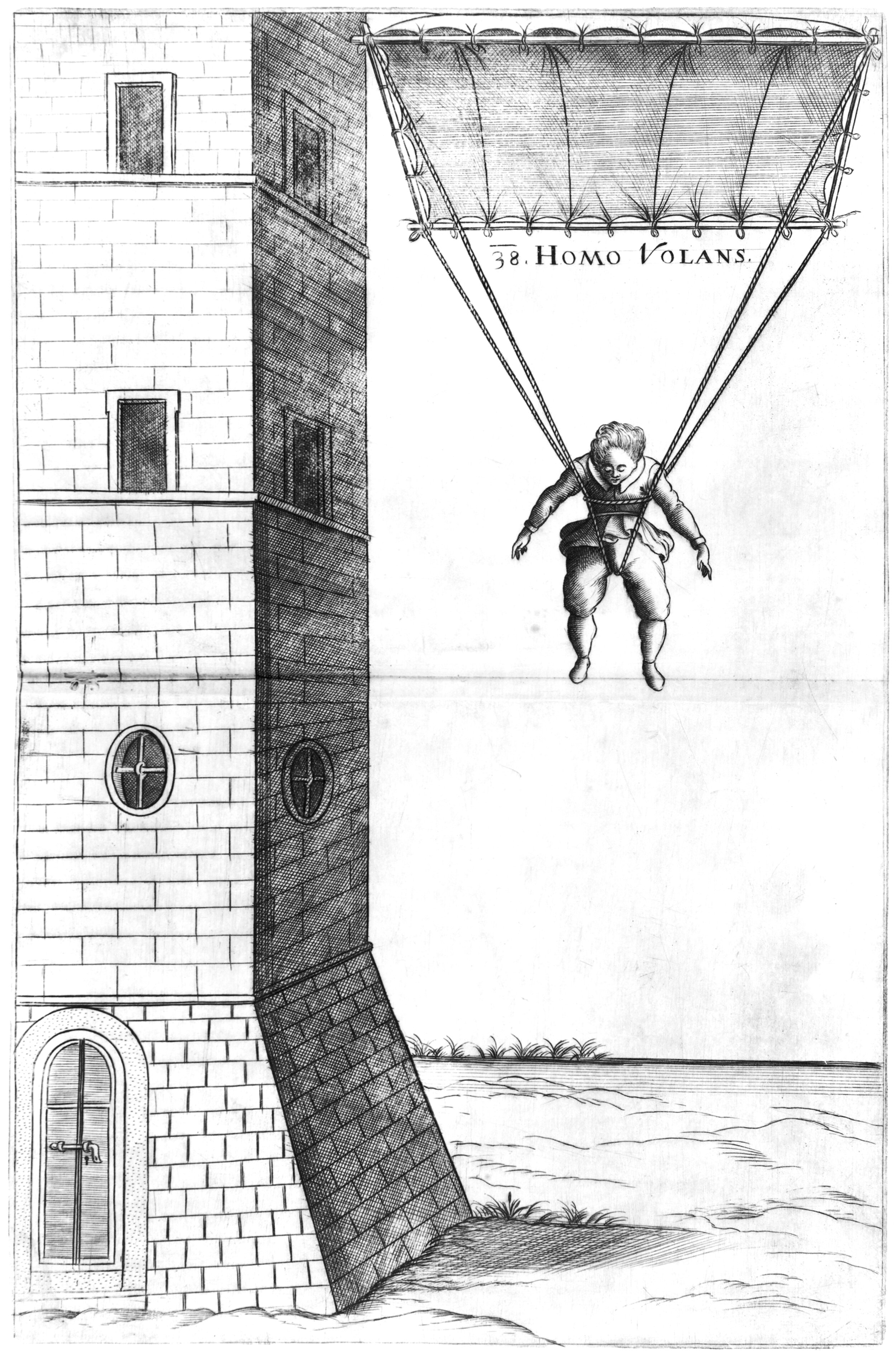
How to Fall : An Early History of the Parachute
Throughout the history of human flight attempts, the number one cause of death and injury has been a fall from a high place. In the early days of flight attempts, most examples involved jumping from a high perch and trying to stay in the aloft for as long as possible. Alongside these attempts at flight, others were concerned with the art of falling. How could a person leap from a high place and return to the surface safely? The resulting paths of thought make up the early history of the parachute.
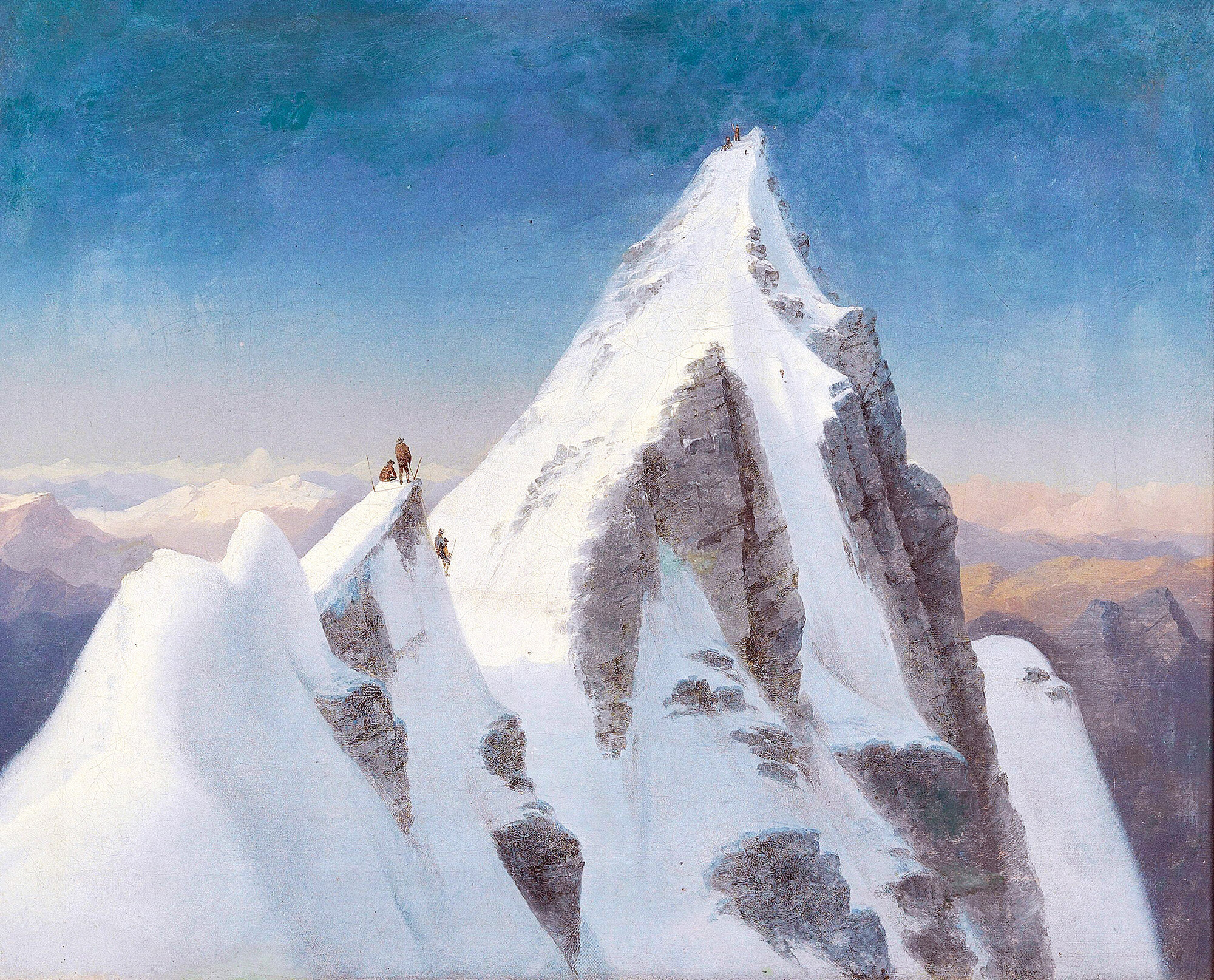
Markus Pernhart’s Großglockner Paintings
The above painting was created in 1871 by Austrian artist Markus Pernhart. It shows the peak of the Großglockner, or Grossglockner, which is the tallest mountain in Austria. It does a great job capturing the contrasting scales of human and mountain. If you look closely, there are two groups of mountaineers pictured atop each peak, dwarfed by the jagged forms of snow and rock. This puts the focus of the painting on the majestic beauty of the mountaintop, rather than the effort it took the mountaineers to reach it. In many ways, these mountaineers are meaningless when compared to the mountain itself. The Großglockner has been around for millennia, and will still be around long after this expedition is finished.
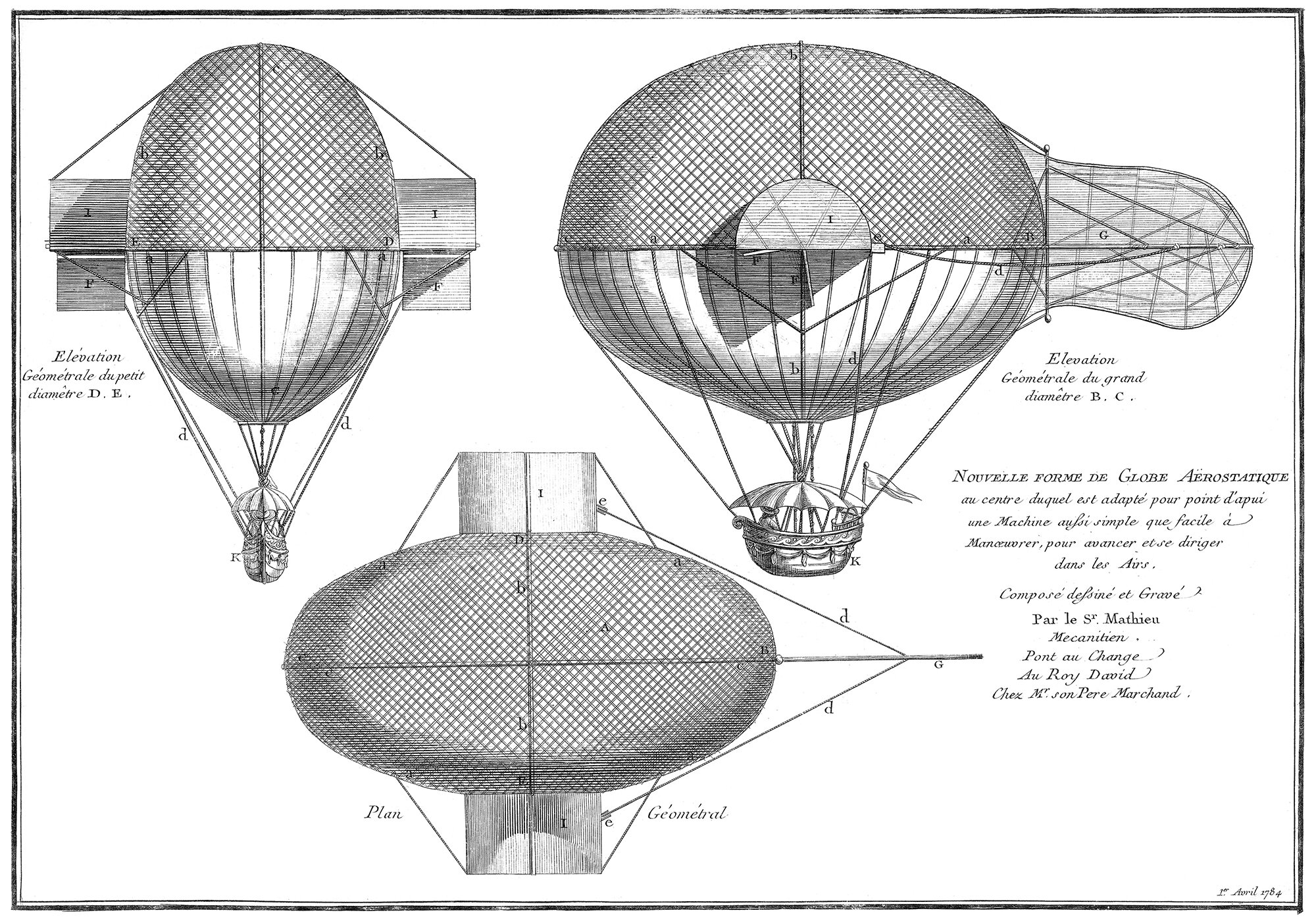
Jean Mathieu’s Aerostatic Balloon
This is a 1784 design for a finned balloon, designed by Jean Mathieu. It’s called Nouvelle Forme de Globe Aërostatique, which means New Shape for an Aerostatic Balloon. It’s an interesting one, because it’s unclear how it’s supposed to propel itself through the air. The design consists of an ellipsoidal balloon with a small basket underneath, housing two pilots, as well as two side hoods and one rear fin.
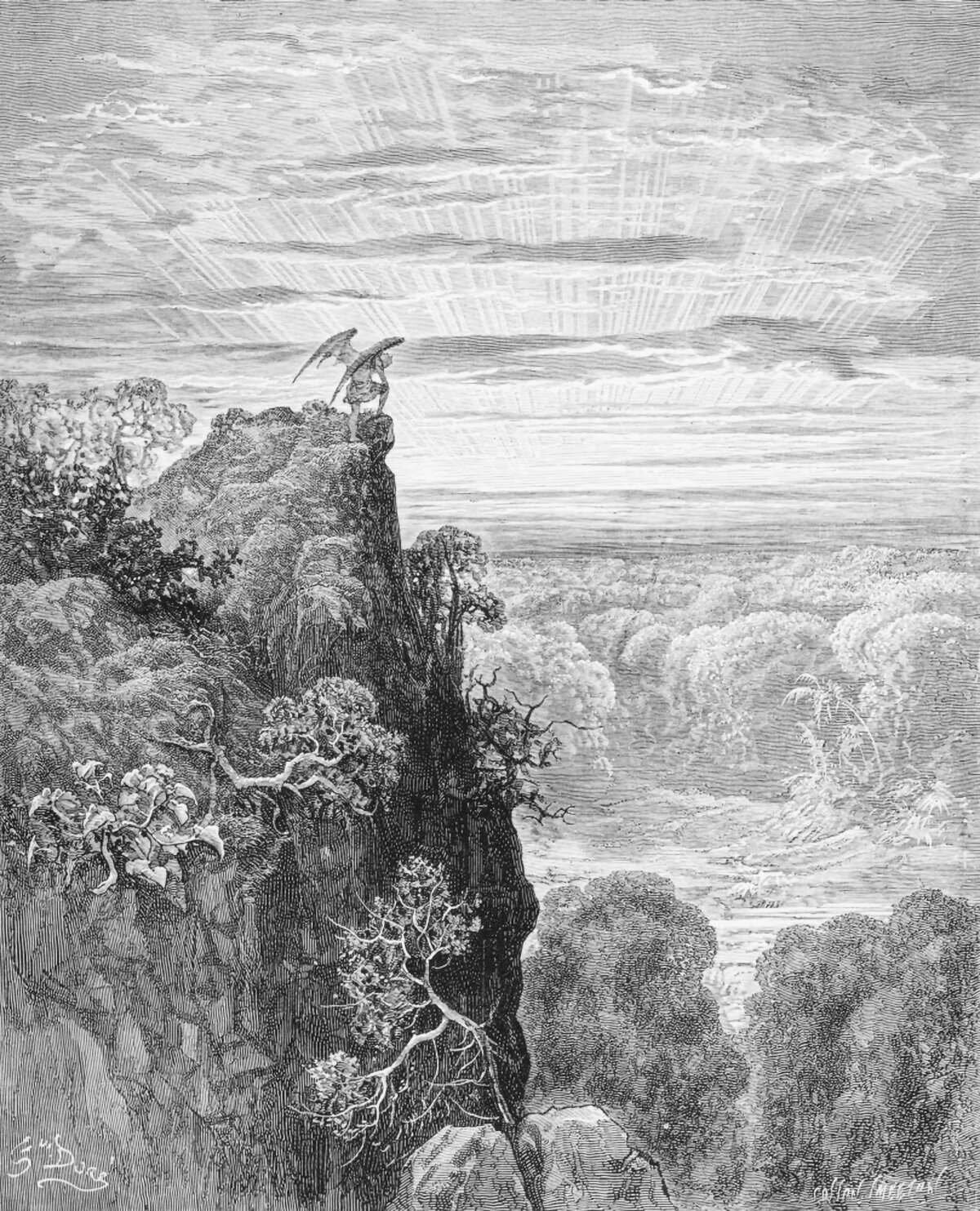
Satan Overlooking Paradise by Gustave Doré
This is an illustration by Gustave Doré for John Milton’s epic poem Paradise Lost. The poem deals with the biblical narrative of original sin, and the first half of the story focuses on Satan and his fall from heaven. In this part of the story, Satan is standing on a mountaintop, overlooking the earthly paradise and considering his plan to corrupt Adam and Eve. Milton is using verticality to enhance the drama of the moment, and by placing Satan in such a high place it allows him to examine his motivations more clearly.
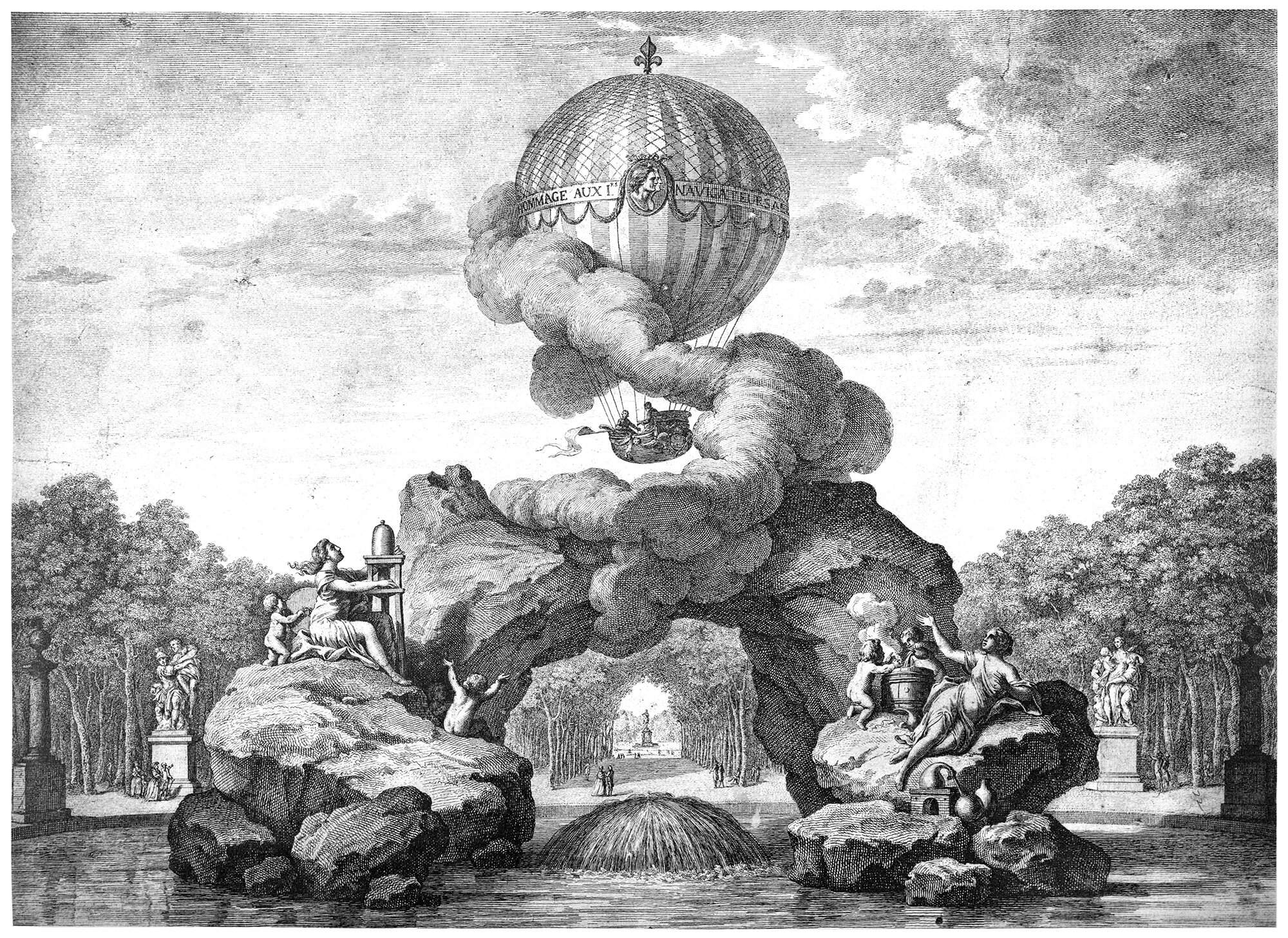
A Monument to the Glory of the First Aerial Navigators
Pictured above is the Projet d'un monument à la Gloire des Premiers Navigateurs Aériens, or the Monument to the Glory of the First Aerial Navigators. It was designed by an anonymous author for a site in the Tuileries Garden in Paris, and it consists of a stone arch placed in a fountain, with a balloon flying above it supported by a cloud-like form.
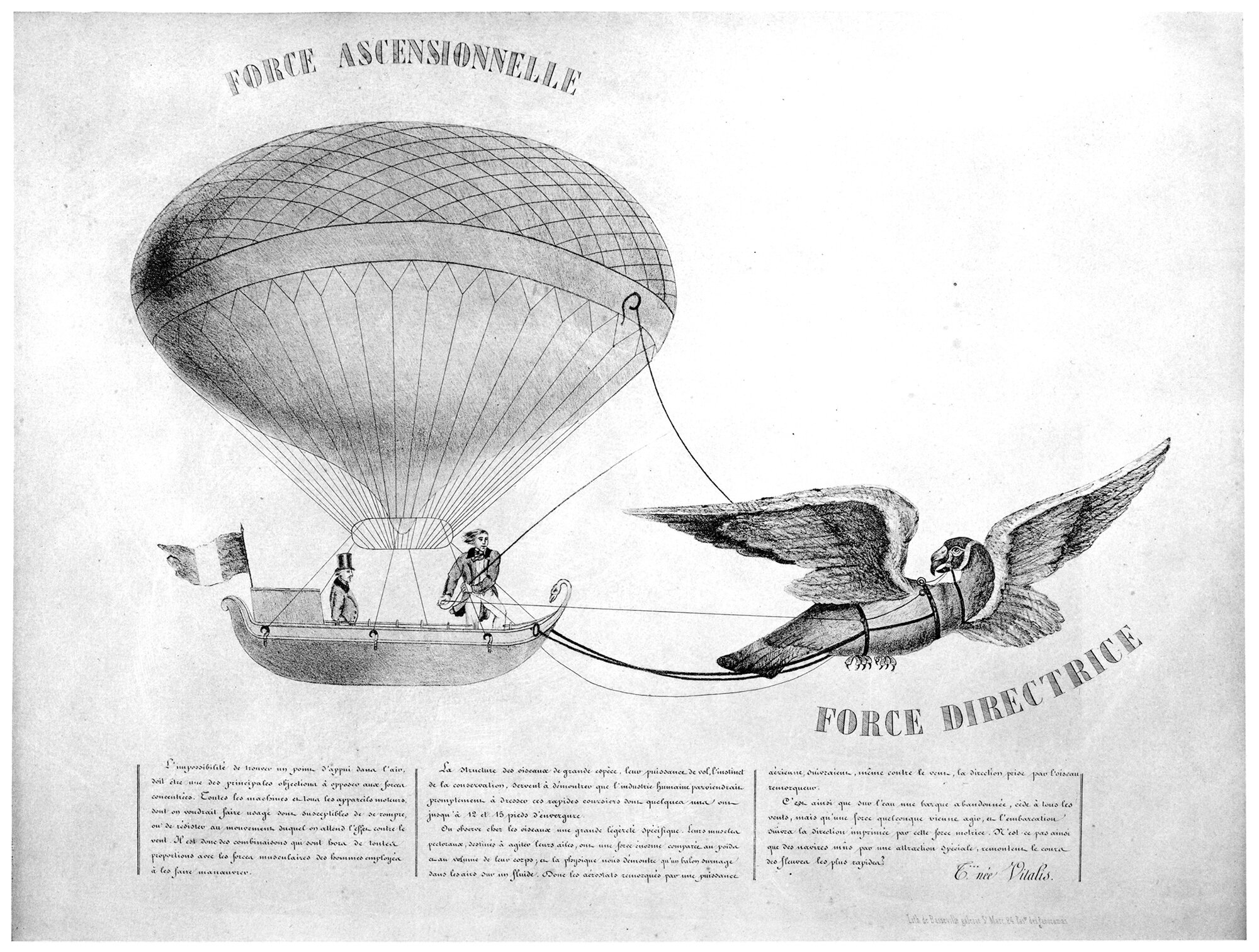
Tessiore’s Balloon Project Towed by a Tame Vulture
Pictured above is a design for a flying machine, consisting of a balloon pulled by a tame vulture. It was originally published in 1845, and was re-published in 1922 in the book L’Aeronautique des origines a 1922. The title of the illustration is Projet de Ballon Remorqué par un Gypaète Spprivoisé, or Project for a Balloon Towed by a Tame Vulture. I’m unable to find any data on the image apart from this, but the content itself is enough to discuss, for obvious reasons.

W.F. Quinby and his Three Flying Machine Patents
Pictured above is a patent drawing for a flying machine, designed in 1869 by Watson Fell Quinby, or W.F. for short. It’s the second of three patents for flying machines that Quinby has to his name. It shows a man flying with three wing-like sails attached to him, along with some rudimentary controls at his hands and feet. As with all of Quinby’s designs, we don’t have any photos to compare the patent drawings to, so we’ll have to assume that if he built any prototypes, they weren’t successful.

Athanasius Kircher’s Turris Babel
The concept of the Tower of Babel is a timeless one, and throughout history it’s attracted the attention and imagination of myriad individuals. One such individual was Athanasius Kircher, a German scholar and polymath who lived from 1602-1680. His 1679 work Turris Babel explores the concept of building a tower that would reach Heaven, and it was accompanied by a few etchings of such a building.

Flying Carpets and the Power of Flight
Flying carpets are the things of folk tales and fantasy. They are magical objects with the power of flight, and anyone who owns one has considerable power over those who don’t. They can quickly transport their owners across the land at great speeds, and they allow their owners to achieve verticality. Here’s a look at the folk tales that established the myth of the flying carpet.

Tito Livio Burattini’s Flying Dragon
The above sketch is by Italian engineer Tito Livio Burattini, drawn sometime between 1647 and 1648. At first glance, it’s hard to reconcile a sketch of a flying dragon with a serious proposal for human flight, but Burattini had spent quite a bit of time researching flight, and the sketch was part of a larger treatise on the subject. It was titled Ars Volanti, and throughout the text Burattini wrestled with the idea of flight and how it may be achieved.
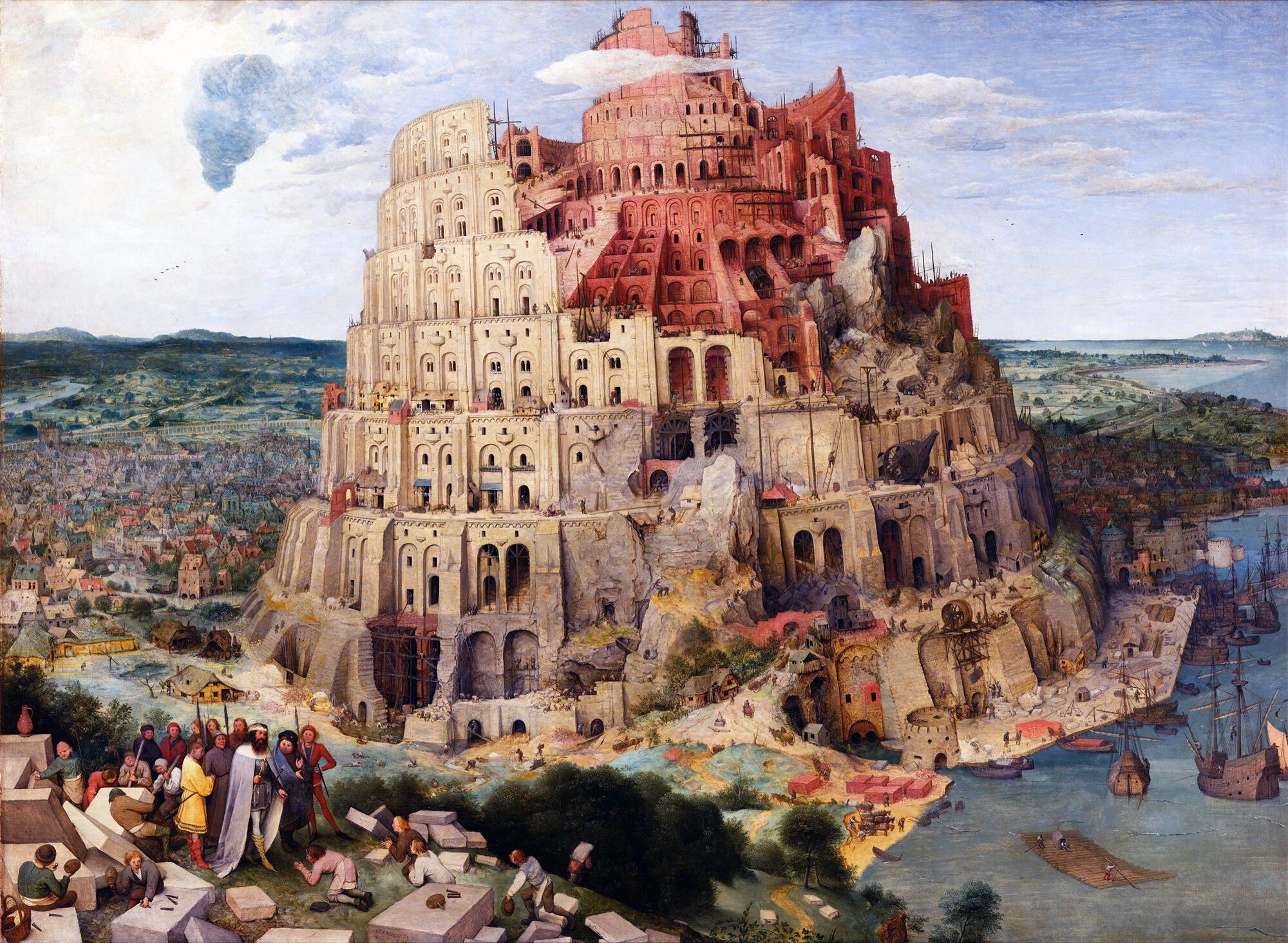
The Tower of Babel : A Parable of Verticality
The Tower of Babel is arguably the most storied myth about the human need for Verticality that has survived from antiquity. It’s a legendary tale of a clash between Ego and God, and it acts as a starting point for any worthwhile history of human towers or skyscrapers. Let’s take a look at why it’s been so influential, and why it encapsulates our struggles with Verticality.
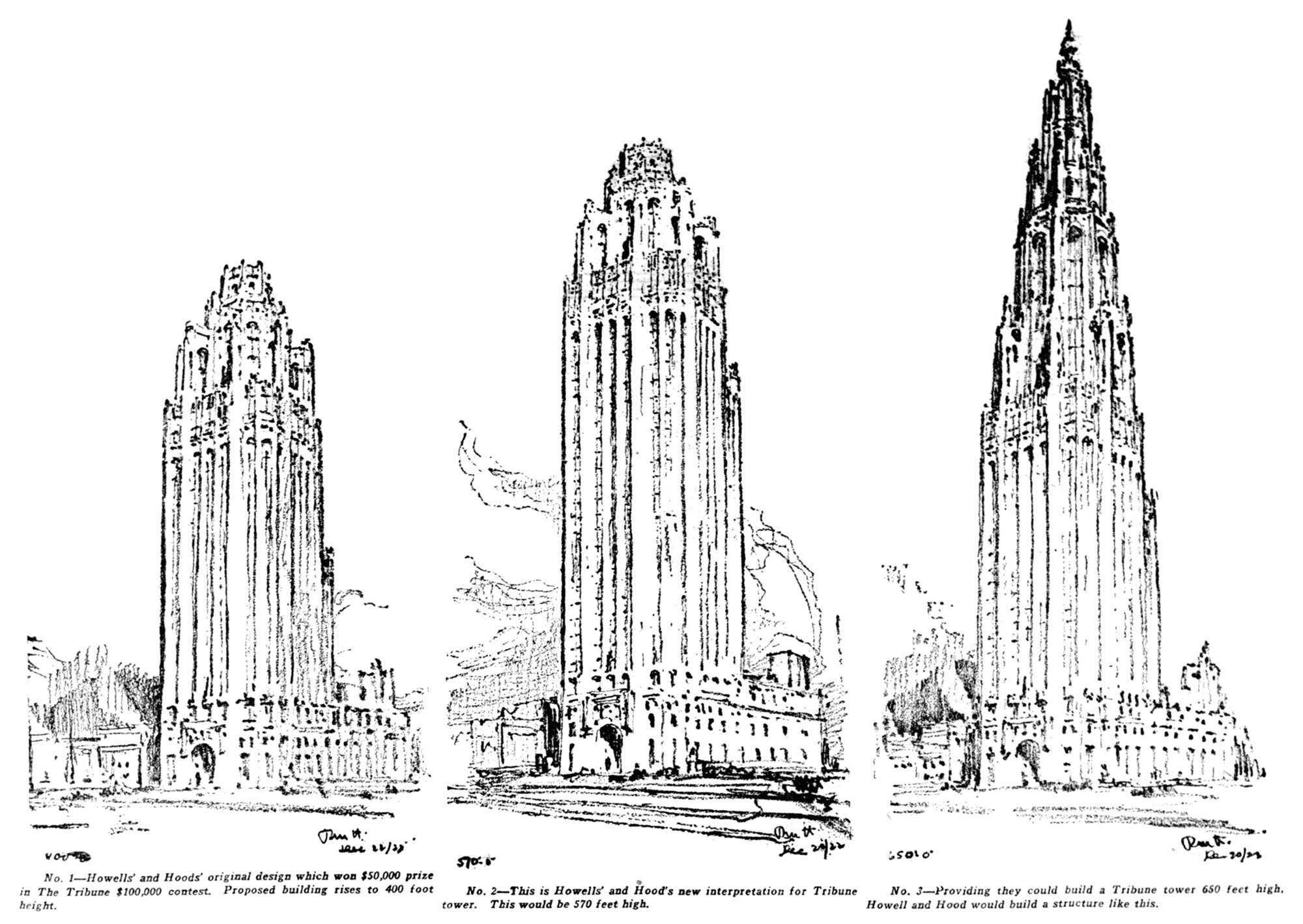
Alternate Realities : Chicago Tribune Tower
Pictured above are three design sketches for the Chicago Tribune Tower. They were drawn after the newspaper asked the architect to study taller options for the building, because they were considering whether or not to build the world’s tallest skyscraper. The increased height would require special approval from the city, so in the end they opted for beauty over height, and didn’t pursue the taller options.

Pierre Ferrand’s Corkscrew Airship
This is Pierre Ferrand de Montfermeil’s 1835 design for an airship, featuring a giant screw mechanism and an elaborate system of fins. Unfortunately details of the design are scarce, and this appears to be the only image we have. According to the authors of the book L’Aéronautique des origines à 1922, it originallt appeared in a brochure titled Projet pour le Direction de l'Aérostat par les Oppositions Utilisées, or Project for the Direction of Airships used by Oppositions.

Zeus, Poseidon and Hades : The Verticality of the Greek Gods
Nearly all ancient belief systems are based on the surface, the underground, and the sky in some way. These three concepts represent something primal for humans, and throughout history we’ve attached myriad meanings and stories to the relationship between them. Typically, they’re either represented by an abstract concept or a god. An example of the former is the Christian idea of heaven and hell. An example of the latter is the Ancient Greek gods Zeus and Hades.

The Unpretentious Philosopher
Check out the above illustration. It’s the frontispiece to Louis Guillaume de La Follie’s science-fiction work La philosophe sans Pretention, or The Unpretentious Philosopher, from 1775. What’s most interesting about it is the flying machine featured in the drawing, evidenced by the crowd of onlookers in awe of it.
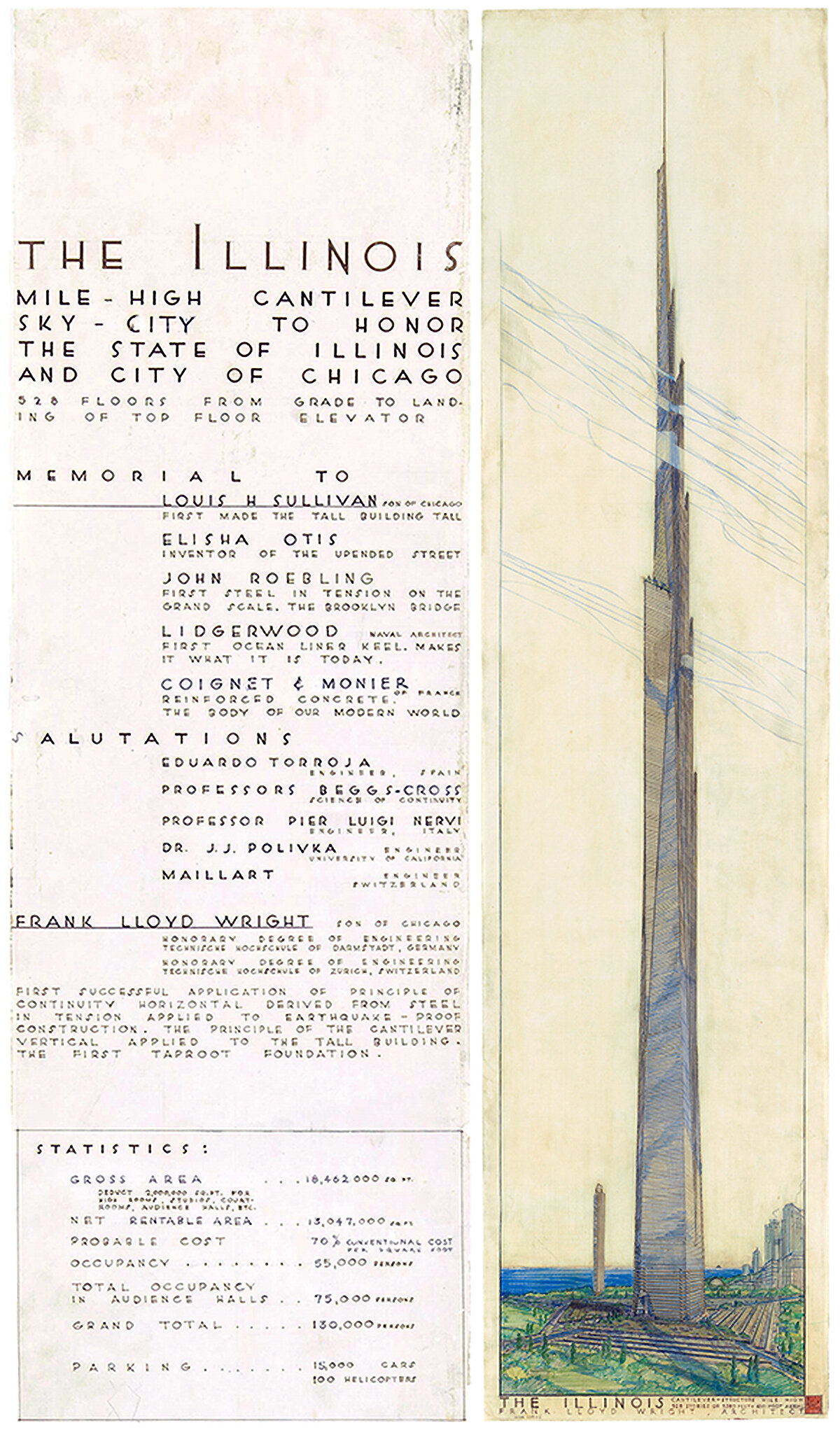
Frank Lloyd Wright’s Mile High Skyscraper Proposal
Frank Lloyd Wright was an outspoken advocate for low-density cities without skyscrapers. With this in mind, it’s hard to believe the tower design pictured above came from Wright. It’s called The Illinois, and it was planned to be a mile (1,609 meters, or 5,280 feet) in height. That’s more than four times the height of the Empire State Building, and nearly twice the height of the Burj Dubai.
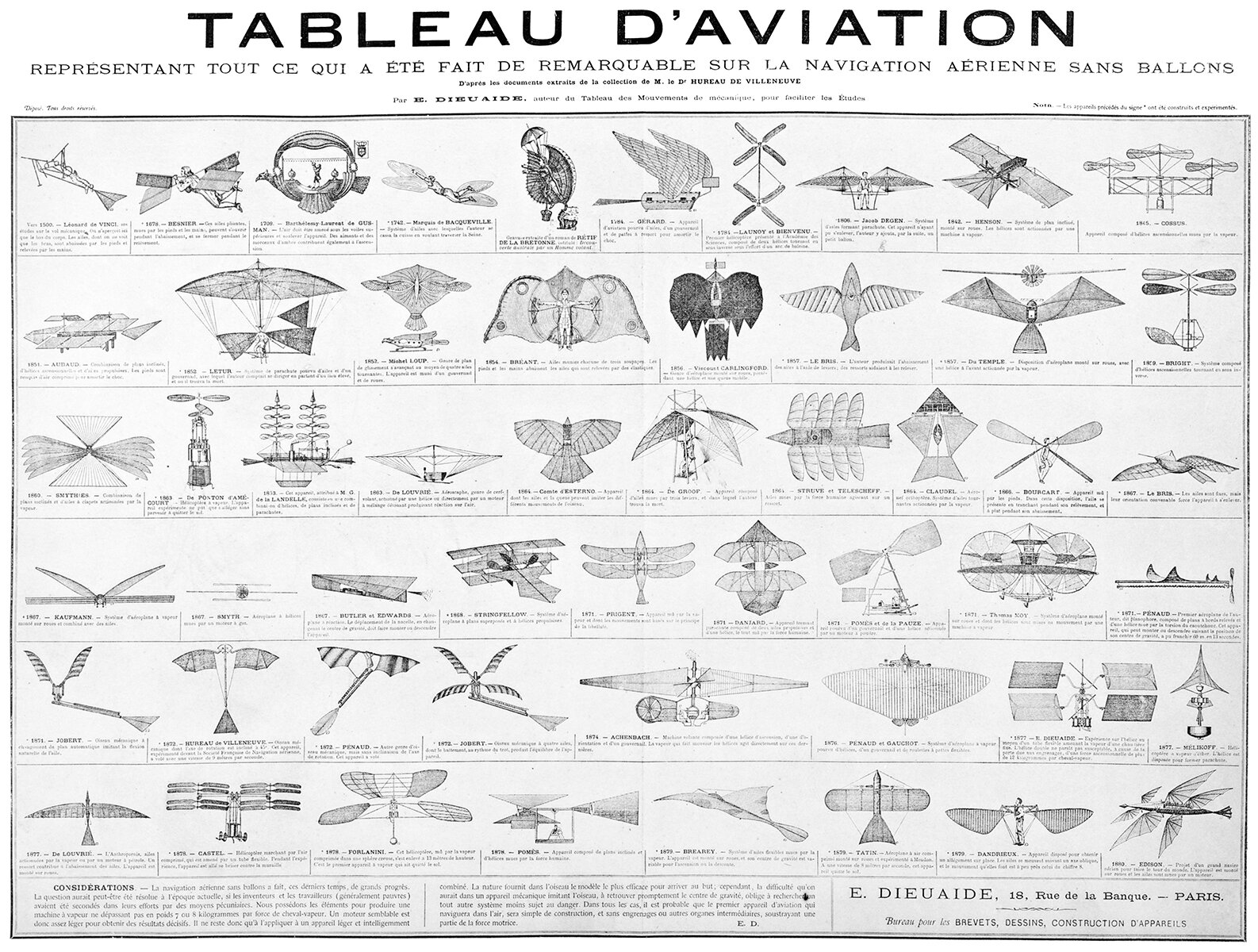
Tableau d’Aviation
The creativity and ingenuity on display throughout the history of flying machines is amazing. A quick survey of the table above shows the wide variety of ideas tried out before we humans successfully learned how to fly. One thing I love about this table is that it includes fictional flying machines as well as real prototypes. This shows that fictional designs can and have influenced the history of flight just as real prototypes have.
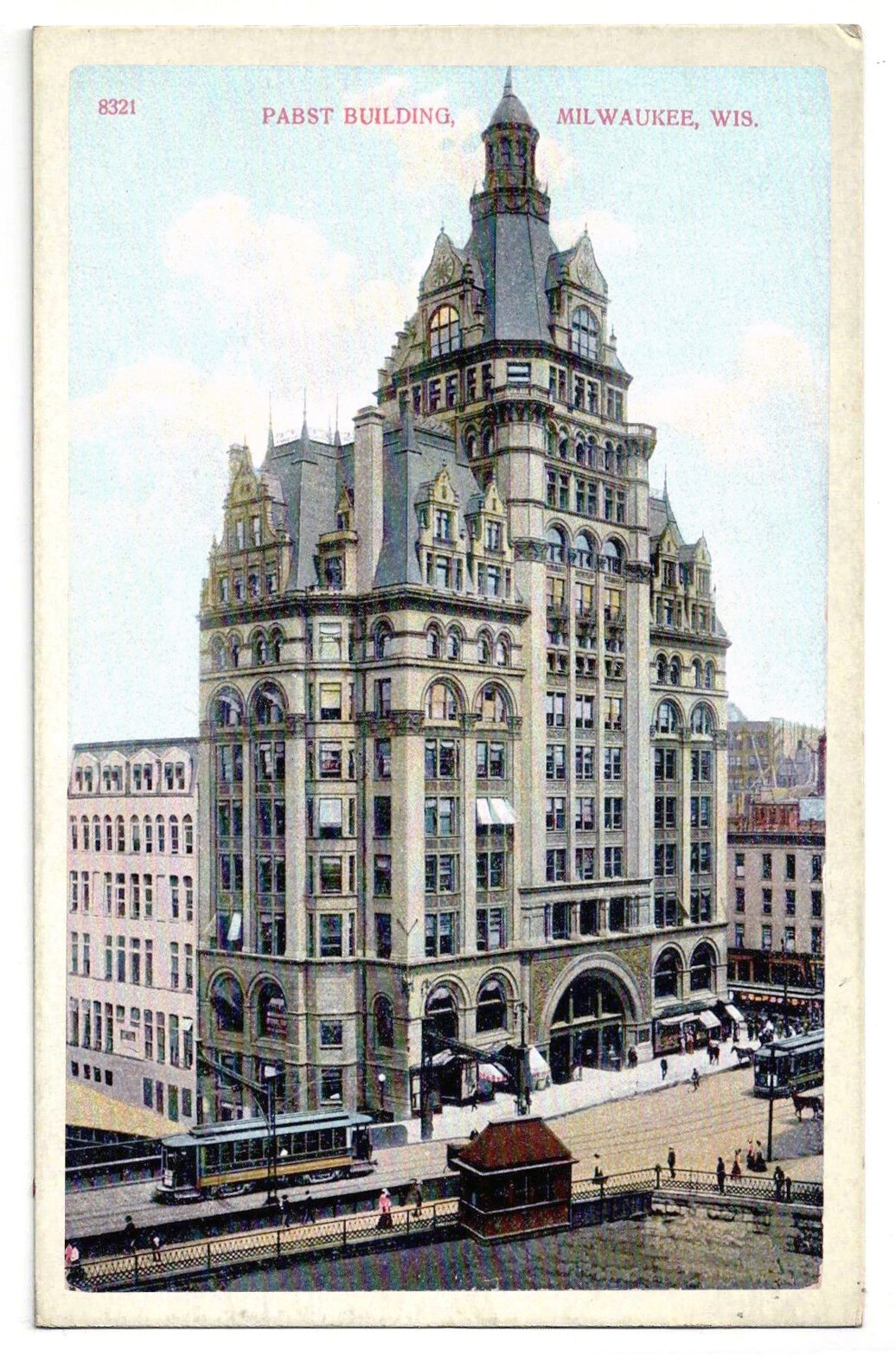
The Pabst Building and the Symbolism of Verticality
In 1890, Frederick Pabst purchased a plot of land at the center of downtown Milwaukee, on which he planned to build a headquarters for his brewing empire. A year later, the Pabst Building was complete. Standing fourteen stories and 235 feet (71 meters) tall, it was the tallest building in the city at the time, and it was a wonderfully detailed example of the Renaissance Revival style. Being Milwaukee’s tallest building was symbolic for Pabst and for the city, however his building’s dominance wouldn’t last as long as he’d hoped.
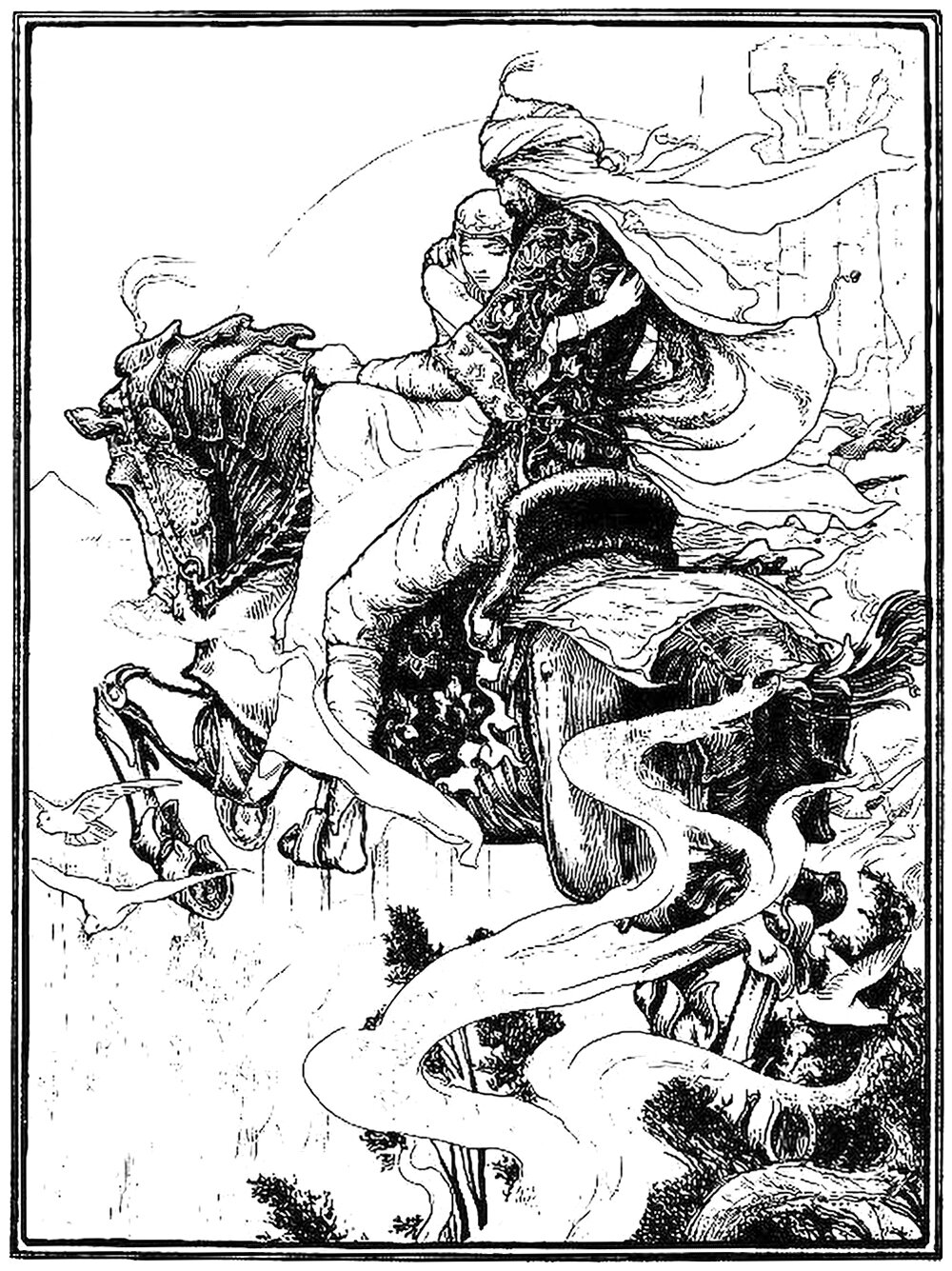
The Tale of the Ebony Horse
Pictured above is an illustration from The Tale of the Ebony Horse, which is a folk tale featured in the Arabian Nights. It tells the story of a mechanical horse that has the ability to fly. Throughout the tale, the horse bestows great power on those who know how to operate it, and it illustrates the power of verticality for the rest of us who cannot fly.
